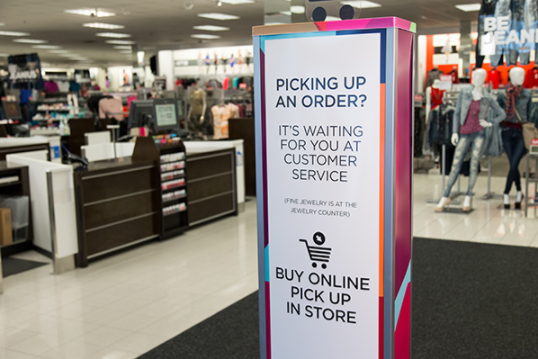
A recent consumer survey from JDA revealed that consumers don’t expect special or unique experiences when shopping in stores. Instead, many shoppers are looking for convenience-related services, such as buy online, pick up in store (BOPIS) or return in-store.
Yet recently many retailers have been more focused on the need to create unique experiences to draw consumers to the brand and generate more foot traffic in stores.
The RTP team discusses what these contradicting strategies may mean for retailers, and how they can strategize effectively when faced with industry studies that could be counter-intuitive. .
Debbie Hauss, Editor-in-Chief: I have to admit, I was surprised when I saw the results of the JDA survey — not because I think BOPIS and other fulfillment options aren’t important, but I didn’t think they would overshadow the importance of a unique store experience. I still don’t — I think today’s shoppers want it all, at their convenience. So, it comes down to the specific shopping situation, the retail brand and its competition. If we’re talking about an item that could be purchased on Amazon Prime and delivered to the home the next day (or in 2 minutes), then a competing retailer better be able to offer a similar service. If we’re talking about a specialty apparel item, it’s more likely that the brand image and relationship with the customer will come into play, so a unique in-store experience may win over the shopper in that case. Retailers need to know their target audience and their competitors in order to succeed in today’s hyper-competitive retail marketplace.
Adam Blair, Executive Editor: The apparent contradiction here — between the hunger for experiential retail and the desire for convenience — doesn’t seem to me to be a contradiction at all. As RSR’s Brian Kilcourse said, retailers tend to cluster at either end of a broad spectrum: Mass merchants fulfilling basic needs are at the “convenience” end, and retailers selling items related to self-esteem or enjoyment are at the “experience” end. That makes sense to me. When I’m buying socks and underwear, I want convenience. When I’m buying a three-piece suit, I want an experience (namely someone to help fashion-challenged me feel confident about my purchase). When I’m browsing in a bookstore, I want both — the convenience of quickly finding a book I’ve read about, and the serendipity of discovering one I’ve never heard about as I wander the aisles. Today’s retailers don’t have to be all things to all people all the time, but they do need to know where they sit on the convenience/experience spectrum.
Klaudia Tirico, Features Editor: This conversation boils down to knowing your customers and knowing them well. Retailers must establish a value proposition and gain customer feedback — whether it’s through feedback cards, online surveys or through old fashioned customer data they’ve collected over the years — to nail down who is shopping at their stores and what they look for when they walk in or sign on an e-Commerce platform. Like Adam said, if the customers are signing on for quick, recurring purchases, make sure their time with you is quick and painless. If they’re Millennials or Gen Zers who want to share their shopping journey on social media, create an experience that they can share on Instagram. All these unique, “hot” strategies and ideas don’t mean anything unless they make sense for the retailer and its customers. Just because experiential retail is a hot topic within the industry does not mean it’s a fit for all retailers.
Glenn Taylor, Senior Editor: I thought the survey was insightful but it wouldn’t surprise me if this was one of those situations where respondents answered differently than how they really act. The idea of BOPIS (or BORIS, as the study also covers) always has appeared very convenient on paper, so people may see that in the heat of the moment and think “that would definitely get me in the store.” At the same time, many shoppers often want to go to a store for a specific reason that really drags them in. Omnichannel fulfillment initiatives appear to fit best for people who are either always on-the-go or are looking for a cheaper deal, but those spending most of their shopping time browsing online are still going to need that extra incentive to travel to the store to pick up their order. The retailers that are already successfully implementing omnichannel fulfillment options should continue to build on that strength to set themselves apart, but I don’t think this should be as much of priority if the retailer already has massive issues driving people to stores in the first place.






